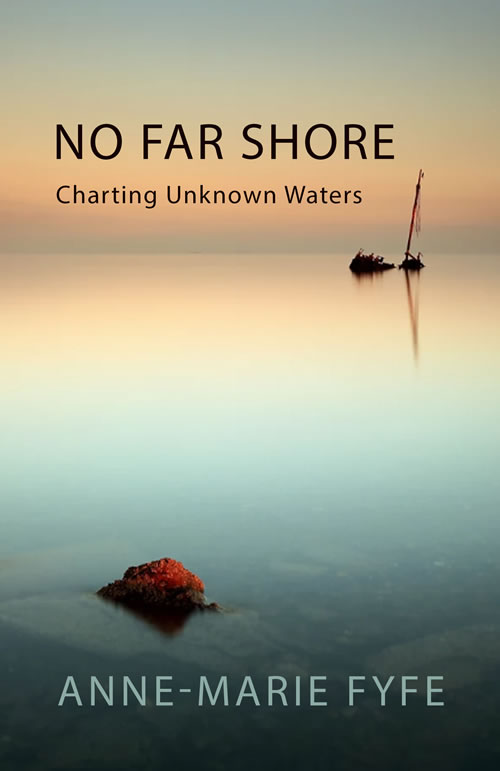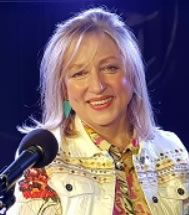Local Writer Follows The Lure Of Coastlines In 'No Far Shore'
Anne Marie Fyfe's literary quest charting unknown waters

|
Anne-Marie Fyfe has published five books of poetry but her latest publication sees her on a unique journey, exploring her poetic obsession with horizon-gazing, in a literary/travel/personal memoir, No Far Shore, Charting Unknown Waters (Seren Books, 2019).
In the book, Anne-Marie, who grew up on the Antrim Coast, goes on an odyssey from her native Cushendall, by way of sea’s-edge locations such as Suffolk, Orkney, Wexford and Swansea, to Martha’s Vineyard and Nantucket, and then north from Cape Cod to Nova Scotia’s remote Breton Cove.
Born in Cushendall, County Antrim, she lives in Bedford Park, and has run Coffee-House Poetry's readings & classes at London's Troubadour, since 1997. She is a Poetry Co-ordinator for the John Hewitt International Summer School in Armagh, is former Chair of the Poetry Society, and was 2019 Writer-in-Residence at Lenoir-Rhyne University in North Carolina. Here she discusses her latest book in greater detail.

We’ve talked before, on the W4 Newsletter, about the poetry collections you’ve published, including ‘House of Small Absences’ – but ‘No Far Shore’ moves beyond poetry, doesn’t it?
Well, the subtitle of ‘No Far Shore’ is ‘Charting Unknown Waters’, and one aspect of that ‘charting’ was the desire to set out on a new kind of writing. Not ‘unknown’ perhaps, as I’d written and lectured about other writers who’d influenced me, which is one of the book’s aspects. (I’d talked on TV and radio programmes about Sylvia Plath and Emily Dickinson for example.) But ‘untried’ waters certainly in terms of combining memoir, travel, poetry, fact and legend, and personal and family history.
Not just new to me, but part of the ‘unknown seas’ that a number of non-fiction writers have been ‘setting sail’ on recently. And I admit to being influenced by teaching (and writing) in the US over the past 10 years, including being appointed 2019 Writer-in-Residence at a North Carolina university. The borderlines between poetry and personal memoir, between imagination and the actual, are really being reshaped by current American authors.
So the book’s typical reader is anyone interested in travel, or the sea, or memoir, the past, literary biography, or a little maritime geography, even shipwrecks that connect, say, with my own family story. It isn’t simply a travel book but a series of themed chapters – on islands, lighthouses, the fascination of maps, musings on cloud shapes, migration, childhood family holidays, radio waves and maritime disasters, etc, as diary entries, notes, historical facts, reflections. It’s a journey you can dip in and out of, but with all the strands coming together nonetheless to shape the story I wanted to tell.
Your publisher describes the book as a ‘quest’: can you say what you were looking for on your travels?
I set out simply to explore the lure of coastlines: why some of us are fascinated by water, drawn to its music, its beauty, its risks, even after having, in my case, left my own Irish coastal hometown and lived in London for many years.
Not that it’s just Irish writers who are drawn to water, but I will be reading some of Irish poet WB Yeats’s poems at a Chiswick Pier Trust event on Tuesday 25th February: he’s a great example of a writer growing up in Chiswick but constantly drawn back to Sligo’s coasts and rivers. My partner, Cahal Dallat, and I, will be talking about Yeats’s love of the Thames, and about the dream of ‘home’ that led him to write ‘The Lake Isle of Innisfree’: a poem triggered by the river lapping around Chiswick Eyot, which is close to where we’ll be doing the event entitled ‘A Whole Day’s Dreaming: Yeats, the Thames, and Poetry’.
So just as Yeats was drawn back to rivers and coasts by the Thames, it’s not simply that I’ve been drawn back to where I grew up, on the Antrim Coast with the Scottish highlands and islands in the misty distance, but – wherever I’ve travelled – I’ve been drawn to harbours and headlands, lighthouses and island ferries, all the business of living on the ocean’s edges, exploring shorelines and tidelines, and, of course, being hypnotized by the rush of waves. That’s not surprising, perhaps, as I was born in Cushendall on the Antrim coast, in the third last house at the end of a promontory with the sea on three sides!
But I’ve also always been drawn to writers who – like me – seemed to have a passion for looking out longingly over the waves, rather than necessarily going anywhere. Virginia Woolf’s novel ‘To the Lighthouse’ had always seemed to express that frustrated longing, so I felt I had to go to her family’s holiday home in St Ives, in Cornwall, and simply gaze at Godrevy Lighthouse, to begin to understand the inspiration behind that compelling novel. And just had to go to Barra, one of the many places in the Outer Hebrides where, despite the islands’ stunning beauty, many people – including my McNeill grandmother’s clan – were drawn to distant horizons, some to Ireland’s North Coast and some to Cape Breton Island in Canada’s Maritimes.
Was it that family connection that drew you to US and Canadian coasts?
It was wider than the family story: Herman Melville’s ‘Moby Dick’ had always been one of my favourite novels – another great experiment of setting out into unknown waters as it’s not like any other novel of its time: so I wanted to explore Nantucket’s Whaling Museum, and Martha’s Vineyard and Cape Cod and Boston and the coast of Maine. (That’s as well as exploring, closer to home, Orkney and Nairn and Felixstowe and Aldeburgh, Cork, Hook, Swansea…)
But I’d always loved Elizabeth Bishop’s writing. And though she’s thought of as a Boston poet, I was aware, from stories she’d published in the ‘New Yorker’ that she’d grown up in her grandparents’ house in a small village on Cobequid Bay in Nova Scotia. And I knew that although she’d travelled the world – and visited my hometown of Cushendall, and in fact lived in Brazil for many years – she’d never lost her longing for that earlier coastline.
So I didn’t simply explore two of Bishop’s holiday homes (off the coast of Maine and on remote Cape Breton Island) but got to stay in her childhood home in Great Village in Nova Scotia. And that experience explained a great deal to me about her life, and Virginia Woolf’s, and – as I travelled and read and wrote – something about my own life, about absences – yes, the ‘absences’ in the title of my 2015 poetry collection – and about mothers. The book’s dedicated to my mother and to her mother who, like Elizabeth Bishop’s mother, and Virginia Woolf’s, was absent at a critical childhood time.
So in the midst of all the island ferries and bustling harbours and coastal scenery and the workings of lighthouses and Marconi’s transatlantic experiments, I was discovering both something of the mysterious fascination the ocean has for some of us and something of how and why I’ve had such a passion for gazing – all my life – at unreachable horizons. There is, in a sense, ‘No Far Shore’ to strive for: the point is in setting out, again and again, in the hope of ‘Charting Unknown Waters’.
Tuesday 25 February, 7.30 pm: A Whole Day’s Dreaming: Yeats, the Thames, and Poetry, lecture by Cahal Dallat with Yeats readings by Anne-Marie Fyfe
at the Chiswick Pier Trust, The Pier House, Corney Reach Way Chiswick London
The book is available to buy from her website www.annemariefyfe.com and also at Waterstone’s
February 6, 2020